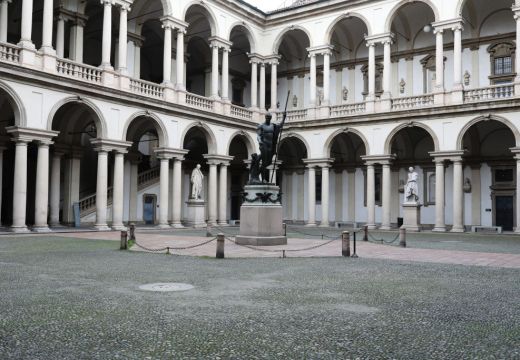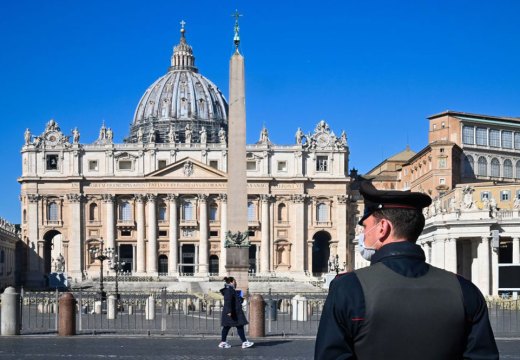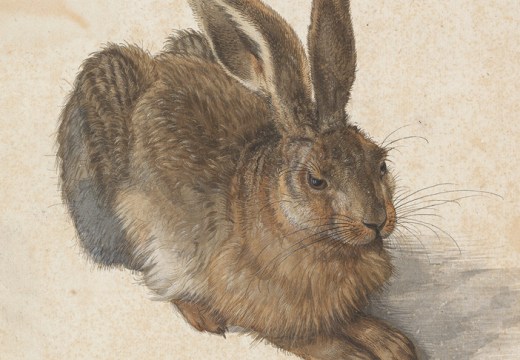When I was asked to cover the opening of the Albertina Modern, I thought excitedly of squeezing into my 48 hours in Vienna as many visits to the city’s fabled museums and galleries as I possibly could. As I write this, stuck in my flat in London, the situation – and the angle of approach – has changed somewhat. The question is no longer how the Albertina Modern aims to strengthen Vienna’s contemporary art scene, but when.
On Wednesday 11 March it was announced that all federal public museums in Austria would be closed until at least the end of March in an effort to prevent the spread of Covid-19. Among them is the highly anticipated satellite venue of the Albertina Museum, which was due to make its debut on 12 March. The launch is now postponed until May – for now, anyway. As director general Klaus Albrecht Schröder says when we speak on the phone, ‘At the moment the only thing that’s certain is that nothing is certain.’
Since he took over in 2000, Schröder has transformed the Albertina Museum – which was founded in the 18th century as a drawings collection and, upon his arrival, still displayed only works on paper. He swiftly broadened its focus to include other media and today the institution shows everything from paintings to video art. There have been exhibitions of work by figures like Gerhard Richter, Anselm Kiefer and Maria Lassnig. Schröder also made a concentrated effort to collect more modern and contemporary art and borrowed or acquired several major collections, including those amassed by Herbert Batliner, Karlheinz Essl and Rafael Jablonka – together, the foundations for the Albertina Modern.

‘Salon Karlsplatz’ (the former Ranftlzimmer) with an intervention by Ingrid Gaier. Photo: © Robert Bodnar
The new museum is a short walk away from its older sibling. The setting: the grand Künstlerhaus (artists’ house), which was given to the artists of Austria by Emperor Franz Josef in 1868 and later used for the Nazis’ infamous ‘degenerate art’ exhibition in 1939. The building has recently undergone three years of restoration, the €57m budget of which was funded by the art collector and industrialist Hans Peter Haselsteiner. (Haselsteiner owns a 60 per cent stake in the Essl collection; his share has been given to the museum on long-term loan.) The new galleries mirror those in the Albertina Museum, with six-metre-high ceilings and terrazzo floors. ‘There will be no visitor who thinks, “Where am I?”,’ says Schröder.
The grand character of the building is one thing that he’s confident will set his new venture apart from other contemporary art venues in Vienna, including the Museum Moderner Kunst (Mumok) and Belvedere 21. The other difference is the art itself, which will be less experimental, more established. ‘We insist that what you see at the Albertina Modern is representative of the canon of art history,’ says Schröder. ‘For the first time we’re not only giving a comprehensive overview of modern and contemporary Austrian art, we’re also showing it in an international and art-historical context.’

Overpainting: Minium on Black Ground (1956), Arnulf Rainer. Albertina Museum, Vienna. © Arnulf Rainer
What you see – or what you will see – is Austrian and international art created after the Second World War. The inaugural exhibition, ‘The Beginning: Art in Austria, 1945 to 1980’, will explore the part the country played in those formative years, with 400 works by artists such as Arnulf Rainer, Valie Export and Franz West. The following exhibition in the programme will show international art from the same period, and from then on artists from home and abroad will always be displayed together. The Austrian-only opening is a reckoning with the Nazi exhibition of 1939. ‘I want to exorcise the bad spirits of the building by showing all those artists who were dismissed as perverts and degenerates,’ says Schröder. ‘They all had something in common: the ideal of the Nazi regime was their enemy.’
What we all have in common at the moment is a crippling sense of uncertainty. While closed, the Albertina Museum is experiencing a daily loss of €60,000. The inaugural exhibition of the Albertina Modern, the result of thousands of euros of production costs, is complete but unable to be seen; the plan is to prolong the closing date so that the running time remains unchanged. Press conferences have been cancelled. ‘We’re very busy, but for very different reasons than those we had imagined,’ says Schröder. For all the public museums in Vienna, loans are not an option at the moment – although, with more than 60,000 works of art by 5,000 artists, the Albertina Modern should have enough to keep itself going.
I ask Schröder if there’s any comfort we can take from art in times of crisis. Without hesitation, he refers to the work displayed in ‘The Beginning’. ‘These artists couldn’t sell anything; they had no distribution network. But they insisted on the truth of their mission and on what had to be done rather than what was expected,’ he says. ‘They insisted on fighting suppression and terror, even at a time when Austria thought of itself as a victim. They believed that Austria was also an actor – and this gave them enormous strength and power.’
For more information visit the Albertina Museum’s website.
Unlimited access from just $16 every 3 months
Subscribe to get unlimited and exclusive access to the top art stories, interviews and exhibition reviews.














![Masterpiece [Re]discovery 2022. Photo: Ben Fisher Photography, courtesy of Masterpiece London](http://www.apollo-magazine.com/wp-content/uploads/2022/07/MPL2022_4263.jpg)
It’s time for the government of London to return to its rightful home